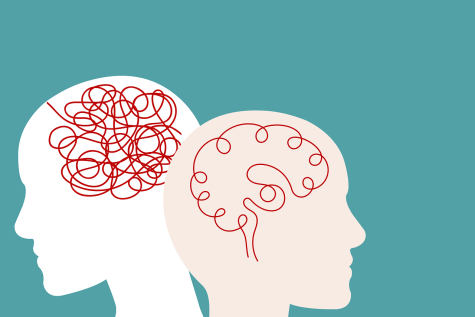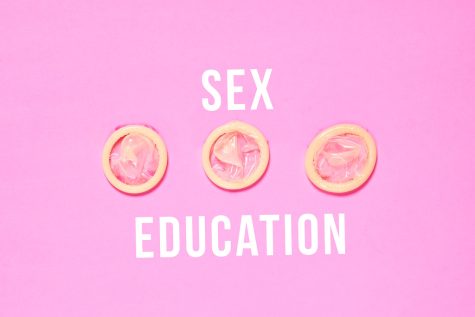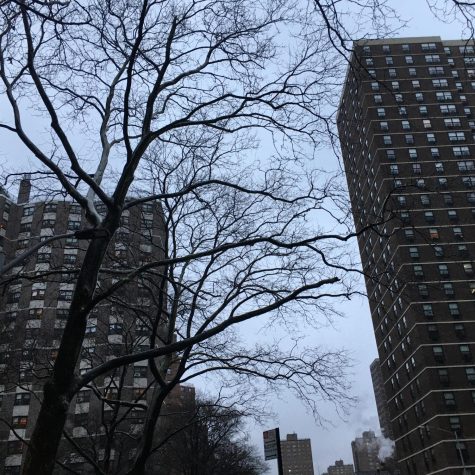America’s forgotten students
November 5, 2018
America’s Forgotten Students
TEA Scandal
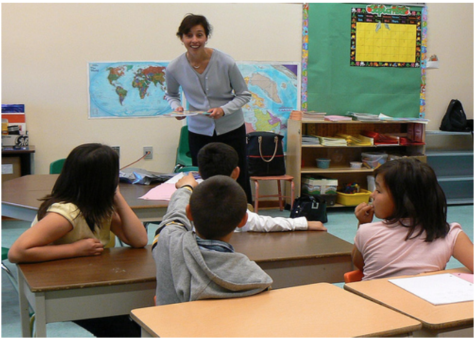
On the topic of education, most would point to the many flaws within the American education system. College dept, homework, students feeling trapped, minorities being held at a disadvantage, tests being an ineffective method in measuring a student’s knowledge are all valid arguments made against the system. But one that is most forgotten would be that of the treatment of special need students. The recognition of this problem reflects how little care and focus are on these students. A report from Statesman back in January, 2018, discussed how the state of Texas was under scrutiny for its treatment of special need students. Under an investigation from the U.S. Department of Education, TEA (Texas Education Agency) was found guilty of violating the IDEA act (Individuals with Disabilities Education Act) of 1997.
It was found that TEA had demanded school districts to deny services to any eligible special need student, in an effort to save money with limited spending. In doing so, TEA failed to recognize eligible special need students, and ensure them to a public education that is best suited for them, thus violating the law.
As a result, over 200,000 students were denied acceptance, and TEA had fallen into a predicament that they would never have wanted otherwise.
In hearing such an event, one might turn the other away, disgusted at how TEA would treat such innocent people who have to suffer the burden, of being viewed as unimportant to society, and have their inherent rights disregarded to please the state’s needs; however, it is important to note that this is a problem that is common among all states, and one that is difficult to resolve when trying to meet the needs of everyone.
This is a result of many schools being provided with limited budgets, and having fast growing school populations according to the report. To combat this problem, states would have to increase their budgets through taxes, with states such as Texas now having to spend over $1.5 billion a year on education.
In states that desire low taxes and limited government, it becomes difficult to abide to these new standards that IDEA poses, making many states having to give up on their old republican form of government. This isn’t to say that what TEA did was justifiable; on the contrary, they should have looked for other methods that would have met the needs of more people, as opposed to resolving their problem with an easy, unethical tactic.
While the case underscores how Texas was at fault, it also exposed a common problem to many, that special need students have to face in their lives. Whether these types of actions taken that treat special need students as an inferior group of people are intentional or not, there is no denying the fact that they leave a negative impact on the special needs’ ability to flourish in their academics, and hold them back from ever receiving such necessary help.
What is IDEA, and What Does it do?
Over the past few decades, many activists have gone out of their way to protest the way in which special need students were treated, filing lawsuits against school districts, and desiring for the integration of special need students into public schools. As a result, EHA (Education for All Handicapped Children Act) was passed by Congress in 1975, ensuring students with disabilities to receive a free and appropriate education that would meet their needs.

States would also be given federal funding to provide a well established experience to these students, that is equal to that of their peers. EHA would later be amended and enforced upon in 1997, later to be known as IDEA. IDEA would go on to help millions of Americans, and leave a positive impact on the lives of many.
According to the National Center for Education Statistics, millions of students were able to receive special education services since the act was passed, with the years 2015–16 having a rapid increase of 6.4 million, to 6.7 million students being served. While that is still about 12% of the special needs population in the U.S., IDEA has undeniably provided more aid to these students than that of the government in the early 1970s to late 1990s, a feat that is extremely difficult to accomplish when taking into consideration money, and the amount that had to be spent to provide an adequate education to such students.
Teachers at the iSchool certainly agree with this idea, stating that back then, society disregarded the challenges that many special need students faced in their lives. “I think it’s way better than it used to be, I think that in the old days of public education, anybody who had any sort of special needs would be put into a classroom with other kids with special needs, and so they were not pushed to do better, they were almost just expected to just be a certain way, and it, it never got better,” said Physics teacher Mr. Smolka.
Juan Salas, a junior at Sunset Park High School stated, “I’m not actually sure with their current treatment, but I can say that they did face a lot of discrimination back in the early days.”
Adding on to these already great deeds and benefits, IDEA also ensures these students to a teacher who is able to communicate with them in an effective, and productive manner. The teachers at the iSchool make this evident, as most have stated that they needed to take required courses regarding special need students, on their path to becoming teachers. “Yes definitely. There are multiple courses actually that were required for me, at both undergraduate and graduate level,” stated ELA teacher Mr. Snyder, with Mrs. Colón further elaborating on this fact by stating, “So public schools when they are hiring teachers they have to hire teachers that have specific licenses in a certain area. You are not allowed to work in a public school unless you have that license and certification, and it’s very specific.”
In agreement with IDEA’s requirements of teachers, many studies have pointed out that as a result of such teachers taking special education courses, special need students’ academics were able to improve because of an effective communication between student and teacher. One such study conducted by Martha L. Thurlow, Meeting the Needs of Special Education Students, found that “the vast majority of special education students (80-85 percent) can meet the same achievement standards as other students if they are given specially designed instruction, appropriate access, supports, and accommodations, as required by IDEA.”
In other words, a good communication between special need students and their teachers provides students with a better understanding of the content being taught. This is a good thing for special need students when considering the fact that the large majority have learning disabilities that are difficult to tackle, which are impediments to a students’ development of social skills and understanding.
In the same study, such improvements were also found to be a result of the help provided by peers, as special need students felt more included and appreciated when put into an environment where they were able to share, and exchange ideas with others who are different and more experienced than them.
Mr. Smolka agreed and stated, “What that does for the special education student is that it allows them to be in a situation with other students and so that homogenization of the group allows the special need student, I believe, to operate at a much more increased level than they would have been if they were in a classroom where it was entirely deemed special needs.”
In compliance, Sophomore Michael Figueroa from Pace High School stated, “yeah I definitely find that being something realistic, and something that is positive to any community. The fact that students who are, who don’t have special needs can benefit actual special need students with simply just their presence in the classroom, says a lot about their treatment throughout the years in public schools.”
What’s Holding Special Need Students Back?
It is evident that IDEA has been one of the most effective acts passed by Congress that has been shown to elevate special need students in their academics as seen with their grades and tests scores improving throughout the years. IDEA has also been able to fight through the unfortunate learning disabilities that have acted as obstacles to these students’ lives, helping many achieve what they once believed was impossible.
With such improvements made, it is imperative that society continues to help such students, and not hold them back of their potential successes in life. Despite these achievements, however, many factors have come to light that have been shown to detract these positive effects on the special need.
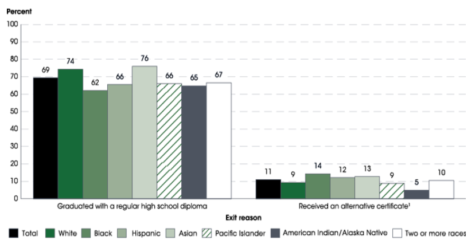
In the same study conducted by the National Center for Education Statistics, it showed that of the students served under IDEA in the years 2014-15, minorities were the ones who made up the majority, when receiving an alternative high school diploma, and having the highest dropout rates than that of white and Asian students. With non-disabled minorities already having among the highest dropout and graduation rates, it is unfair for the special need to also suffer from the same fate. The fact that minority special need students are far behind every other student in America, says something about who IDEA should be helping the most, and who society as a whole, should be more concerned for.
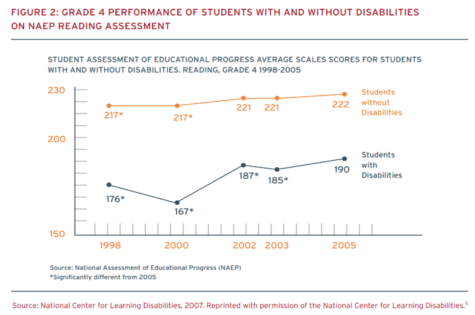
Moreover, researchers of Meeting the Needs of Special Education Students also found that while special need students have been improving throughout the years, they score far below their peers on standardized tests, and there is no sign of them catching up. This essentially ruins their odds of having successful careers in life, because they are so far behind in the race to success as shown in the 2016 Disability Statistics Annual Report.
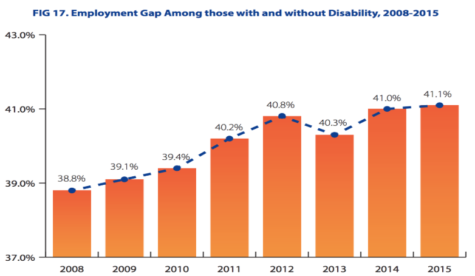
While a good teacher to student communication has been shown to help special need students in their academics drastically, studies have shown that there are rarely any teachers available who have been taught the necessary skills to communicate and comfort these students. According to a report conducted by the University of Hawaii and Agder University College, David L. Cameron and Bryan G. Cook found that “General-education teachers in a teacher-preparation program reported taking an average of 1.5 courses focusing on inclusion or special education.”
The report also indicated that this fact stems from time-constraints and limited budgets, which causes teachers to have a limited knowledge on how to accommodate special need students, and how to provide the help that they so desperately need in schools in order to succeed. This of course, leads to most teachers not knowing how to communicate in an effective manner in which the student benefits. One report conducted by Kate Rosenzweig from Long Island University, also pointed out how teachers aren’t taught how to teach different needs, and how this leads to teachers not being able to accommodate a variety of special need students.
“Teachers are not only hesitant to implement individualized instruction, but they do not even know how to do so,” stated the report. Essentially, teachers have to improvise with an unrealistic situation that does a disservice to an actual special need student, when the inaccurate skills taught are put into action.
Mathematics teacher Ms. Guzman stated, “I didn’t necessarily take a specific special education class, but we did try to learn how to differentiate and accommodate students, so not like a specific class per say, but we did try to learn how to differentiate.” While teachers such as Ms. Guzman aren’t at fault, nor should be held accountable, these actions taken to prepare former college students to become teachers does contribute to the lack of improvements in special need students, and covers up the idea that these students are already getting the help they need. They are in fact getting help, but in an ineffective manner that could be further improved upon.
Mr. Snyder also pointed out other reasons as to why schools aren’t effectively supporting special need students: “I think it’s highly likely that most schools are not in compliance with all the IEPs, due to staffing, finances, and lots of reasons I’ve seen different reasons over the years,” said Mr. Snyder.
The Unhealthy Effects of Abuse

As unfortunate as it is, special need people are also the target of harassment and bullying from society, and even family. Because special need students are mandated to be in an inclusive environment, they are also exposed to negative attention from others around them. This of course, conflicts with a student’s focus on their academics, and directs it towards their unfortunate situation. A report conducted by The Arc found that special need children in general, had a higher percentage of abuse than children without special needs. Reporter Leigh Ann Davis stated that rates of abuse among the special need ranged from 22%, to 70% according to the National Research Council, and that “Children with any type of disability are 3.44 times more likely to be a victim of some type of abuse compared to children without disabilities.”
While many steps have been taken to prevent this issue, such as CAPTA (The Child Abuse Prevention and Treatment Act), a resolution is made nearly impossible by parents. Reporter Davis explains how this is possible: “Parents fear if they report abuse, they may be forced to take their child out of the home with few options for other safe living arrangements.” Davis further elaborated stating, “Often the abusers are parents or other close caregivers who keep the abuse secret and do not report out of fear of legal and other ramifications.”
This is truly appalling, as it is unbelievable how such people can get away with this mistreatment of special need students, especially when such students facing harassment cannot report their case because they “lack understanding of what acts are abusive.” Stephanie Cordova, a junior at Ithaca College, elaborate on this fact when asked what her thoughts were on the abuse of special need students.
Stephanie stated, “Well, it’s definitely something that most people don’t stop to think about, and I find it odd how this entire situation regarding special need students, isn’t really addressed to the public. I think that as students, we only stop to think about our own problems and the things that negatively affect us, while not looking at another’s situation to see if it should get more of an attention than yours. And I think as certain problems affect a majority of students, the more important ones are under loud voices. Issues regarding minorities and like you said, the special need, aren’t given the necessary attention that they need, and so that leads to these problems remaining over a long period of time and never being fully resolved. And it is sad to hear special need students being put at a great disadvantage in life, but as long as their situation is heard, they won’t be able to get the help that they need.”
What can be Done
With a situation this dire, one solution could be to raise school budgets, something that many politicians have proposed; still, citizens would have to pay more taxes for schools to receive such fundings, something that isn’t ideal and satisfactory to the public. Mr. Snyder also elaborated on this idea, explaining that even if special need students were given specific supports to accommodate their needs, they wouldn’t be able to carry them onto college: “It’s definitely a concern, more so that like the number of students we see in a day, it’s tough to even remember each student that requires specific things. I often worry more about students that once they graduate, and going into college, you know the lack of support they often go find there.”
As made evident in the Texas’ case, this whole issue regarding special need students has no clear solution, as it is impossible to tackle every factor contributing to the problem all at once; however, there are steps that can be taken to ease the situation.
The iSchool is one example of schools trying to elevate students in general, with Mr. Smolka noting, “ I think ideally, every single student in the building should have their own teacher, or their own way of learning, right. And that’s actually one of the goals of the iSchool, and I guess why I believe in this place so strongly, is that’s the mission here.”
Mr. Smolka also referred to “Star Trek,” explaining how the Vulcan society is one in which they are able to see where a student is at through a one on one computer interface, so that they can help them grow based on their needs while also giving advice to the educator. Mr. Smolka explained how the iSchool does try to live up to such a situation, in which the school examines everyone’s strengths and weaknesses in order to support them, and how other schools should also mimic this so that these special need students could prosper.
“I think our school does a really great job in comparison to those schools, but I’m sure that there is more that we could be doing. I know that our teachers are really cognizant of the needs of students, and try their best to accommodate all the, needs that are present,” further elaborated Mr. Snyder.
Mrs. Colón also added, “When I think about this school, I know that we work really hard, to make sure that we are providing all the services that the students need, and even with our supports, I know that we could be doing much more. And I think that across the board, I know for a fact that we are not meeting the needs of, especially some of our, truly vulnerable students, and again it comes down to, they don’t give us the budget to best support them, and they don’t give us the support because we’re old buildings. So it’s really frustrating.”
Mrs. Colón also emphasized on the idea of treating special need student equal to their peers, and to not view them as not being able to reach certain standards expected of them because they have a disability: “Certainly set high expectations. I think that sometimes, we forget that, just because a student learns differently, that doesn’t mean that they’re not capable of meeting some higher standards. And so I definitely think, making sure that you set realistic high standards for your students and then holding them accountable. There are some students not all, there are some students that sometimes fall back and say, well I have a disability and I can’t do that. And that could be very dangerous, and we want to make sure that they know that they can achieve something.”

Something else that society can do to better these students is focus on the major problems that have affected students’ successes in general, such as the problem with minorities (mainly black and hispanic) being the lowest performing students in America. Ms. Guzman pointed out something interesting on this idea: “A lot of the time the race of the teacher comes into play, and the majority of teachers in New York City are white females, and most likely not from New York City. So when they come to teach in New York City public schools, and they are very segregated, like lets say a white female comes to teach at a school in Bushwick where the majority is hispanic and black, sometimes they show microaggressions and stereotypes, and that could affect how a student performs, so I think that’s one of the factors that comes into play. It’s just being, how to teach culturally and responsibly, so that you make every student succeed no matter what their background is.”
At SEO, a program that helps such minorities receive the support they need to get into college, program manager Willy Golden stated, “I would say that one large part of it is, I would say the big buckets, are racism and classism. So the reason I’m saying those two things is because it’s not as if, any one, or two races is born more intelligent or born more capable, so it has to be the resources that are available to groups of people, and the way the United States separates resources, is obviously I think, based on class and money, and I think race and racism, factors into class and money. And so I think that it’s I don’t know whether, it’s more one than the other, but I would say that they both affect one another.”
Finally, one last solution would be for individuals to contribute and get involved. Individuals such as teachers and students, should be willing to be a part of the solution regarding the special need. A problem that Golden pointed out, was that there is no present motivation for teachers to help the special need, because they would have to spend extra money on courses that go more in depth about special education: “Take me for example, I got my masters in education and I only took one class that had to do with special need students. That’s because it was, I was only required to take one class so I wasn’t going to spend extra money on more than 1 class. So I think it really comes from grad school programs as well, and whether or not they get available and mandatory for their students, to learn about special need students.”
For the true teachers who genuinely want to provide the youth with knowledge and create a better future with such knowledge, colleges should make these types of courses a requirement that do not involve money. Courses that help the special need should be free and accessible, so that more teachers can get equipped with the essential skills that would elevate the special needs’ academic success. This would also combat the current issue of schools hiring people who aren’t necessarily experts in helping the special need, but that are the most fit among other applicants for the job.
As for students without special needs, Golden also suggested for them to understand where the special need are coming from, and to have empathy for them. “Take a chance,” he stated, “Work with a kid, who for some, you don’t actually know who has special needs, and so I would just say, work with people that you don’t normally work with, and that just helps to create an educational environment where, people feel more accepted and more open.”
“I think that as students we can contribute, and build a community that these students need and to not just, back away because we are embarrassed of being around the special need. I think that we should all be better than we are. I think what we can do as students, is ask them questions about the lesson, spend time with them on homework or classwork if they have trouble with a certain topic, maybe be friends with them,” said sophomore Iverson Lee from Pace High School.

A senior from Park Slope Collegiate, Daniel Rodriguez said, “I like to think back to, I know this sounds corny, but what John F. Kennedy once said you know “Ask not what your country can do for you; ask what you can do for your country.” But in this case, if the government or anyone in power isn’t necessarily doing what needs to be done, I think it’s up to the people to do something. I think we shouldn’t be so heavily reliant on the government to solve our problems, and that we as a community, should help solve the bigger issue at hand if no one else is. After all, that’s what this country allows us to do, to take a stance on what we believe. So, ya definitely taking chances, and comforting those who, maybe never received comfort or help, support I mean, from family members.”
People are always faced with challenges, challenges that cannot be solved by one’s owns efforts. Challenges that require the help others, and a strong community to lift not only oneself, but those along the future. Providing an adequate education for the special need is a difficult task, but if we all put in our effort to contribute to a new experience for these children, if we are truly passionate and humane enough to care and comfort these students to accomplish the best of their ability, only then will these students prosper in their academics. Until that day arrives, special need students will always be held back from prosperity.








